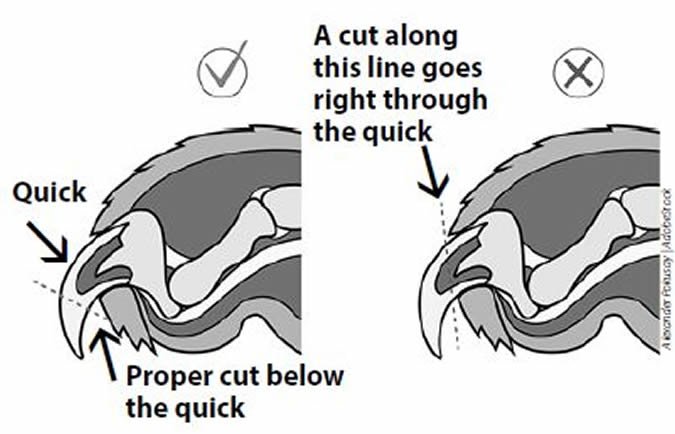
Many cats will wear down their nails with routine scratching (hopefully on an approved scratching post and not your furniture), but for others, we’re responsible for their “pawdicures.” You may need to keep your cat’s nails trimmed to lessen the damage from scratches or to make your cat’s affectionate kneading less painful. Cats who don’t wear down their nails must be trimmed regularly to avoid the nails growing into the cat’s paw.
Going to the veterinary office or a groomer are options, but doing nails at home is less stressful for your cat and cheaper and more convenient for you.
Start Slowly
The biggest challenge to trimming most cats’ nails is not the actual clipping, but having their paws handled. Think about your daily interactions with your cat—do you touch her feet regularly, or do you just pet her head and back? If she is already used to having her paws handled, you have a head start. If not, that needs to be the first step.
Whenever you are petting your cat, occasionally run your hand down each of her legs to her paw. At first she will probably withdraw her foot. Don’t worry—just continue petting as normal and then try again in a few minutes.
Over time, she will realize that you aren’t going to do anything scary to her paw and she will let you touch it. From there you can gradually move up to holding each paw for brief periods of time. You can also reward her with favorite treats or playtime after you touch one of her paws.
How to Trim
You can purchase a commercial nail clipper in either a guillotine style or a scissors style, or you can just grab human nail clippers. Choose whatever tool you’re most comfortable using.
Gently squeeze your cat’s paw to expose the nail to be trimmed. You should be able to see the white hook at the end and the wider section with pink in the middle. The hook is the part that you want to clip back, and it has no feeling, just like the end of your own fingernails. The pink is the “quick,” which contains blood vessels and nerve endings. If you cut your cat’s quick, it will both hurt and bleed.
Once your cat’s nail is exposed and you can see where the quick is, use your clippers to trim the hook off the nail (see figure above). Reward your cat with a treat or by petting her throughout the job, so she finds the procedure both painless and rewarding.
Work in Stages
Many cats won’t sit still for you to trim all of their nails, especially when you are starting out. Clip a couple of nails and then give your cat a break and continue later. Depending on your cat’s personality and patience, this might mean trimming all of her nails over the course of an hour or spreading them out over a couple days. As she gets used to this, you will be able to do more nails at a time.
Pay attention to your cat’s signals that she is getting annoyed. She might pull her foot away from you or tuck it tightly under her body. If she does one of these things, give her a short break or work on a different foot and come back to that one.
She also may swish her tail, narrow her eyes, or growl. These signals indicate impending kitty rage, so it is best to abandon nail trimming for the moment and come back later when she is in a better mood. Patience and persistence pay off.
Tips and Tricks
Be sure your cat is comfortable. Some cats like to be held on their backs like a baby, but others do not. Keep your cat in as natural a position as possible while trimming her nails. For example, if she is resting on the couch, only pull her foot away from her body just enough so that you can get to her nails.
Be patient. It is better for nail trimming to take a long time to complete than to have a bad experience that leaves both you and your cat dreading the next session.
Make sure to get all the nails! Polydactyl cats—those with extra toes—usually have extra nails to go with those toes. The extra nails may not be in regular contact with the ground, which means they often will grow longer faster.
If needed, wrap your cat in a towel to gently restrain her.
edu1971 | Deposit Photos

Regular Trims
Keep on top of your cat’s nails so that they don’t grow too long. For many cats, trims can be several weeks apart. For cats who have issues with their nails, such as the thick, brittle nails that some older cats get, or for cats who just aren’t wearing their nails down at all, more frequent trims may be necessary.
Nails that grow too long can loop around to puncture your cat’s foot, which is both painful and has a high risk of infection. Once every two weeks is a good place to start, and you can adjust your schedule based on your cat’s needs.



